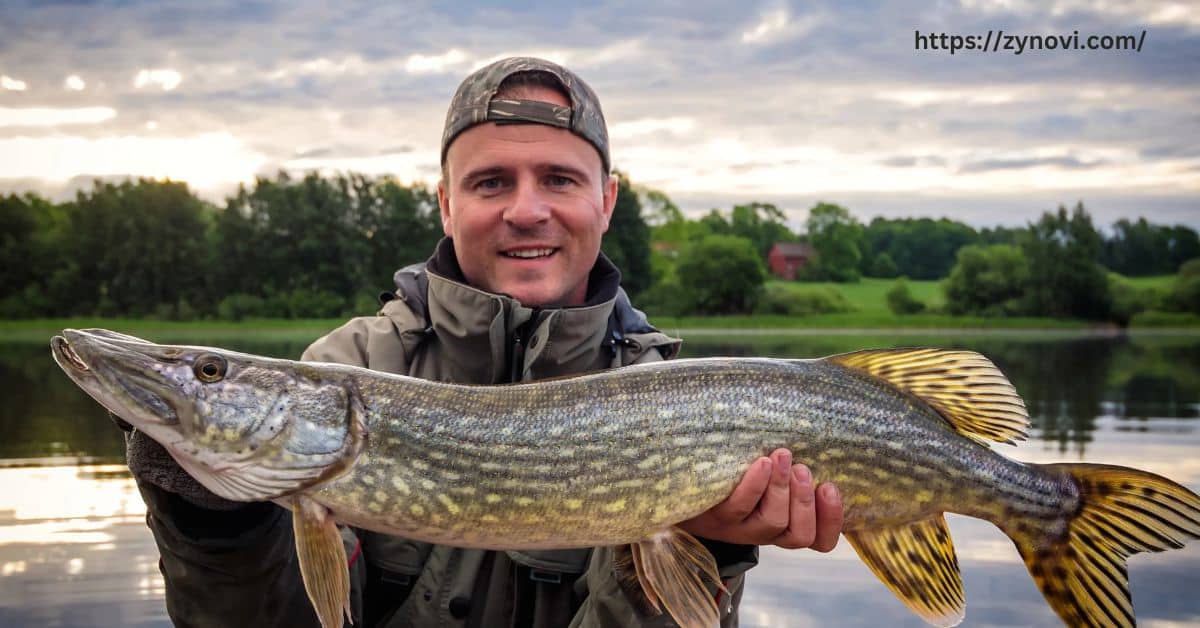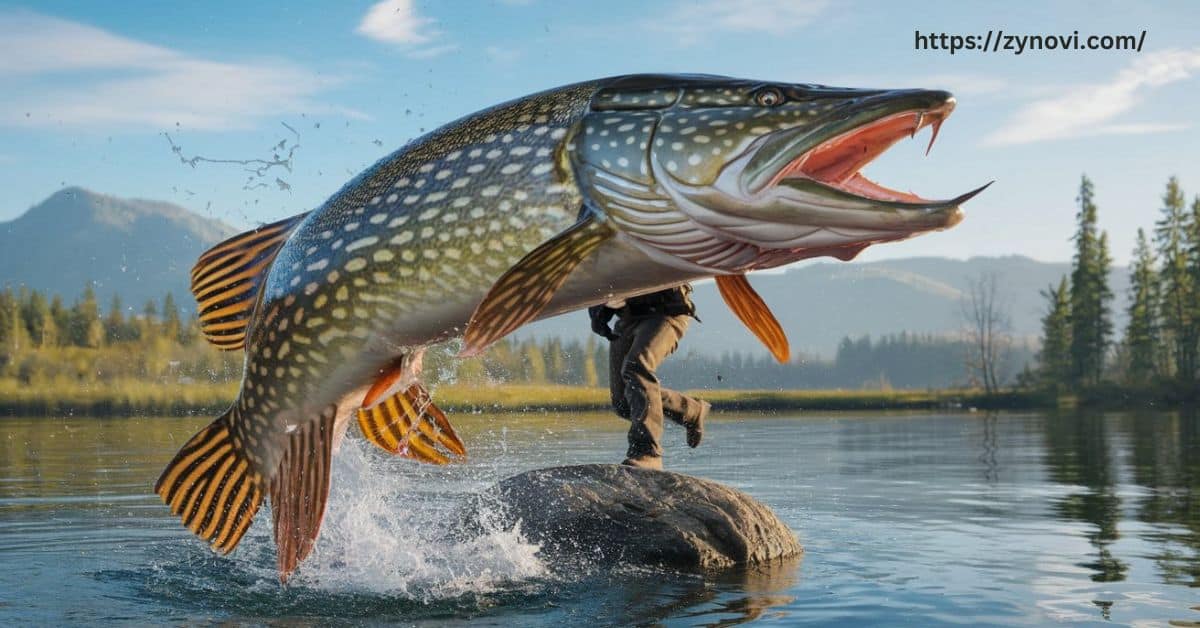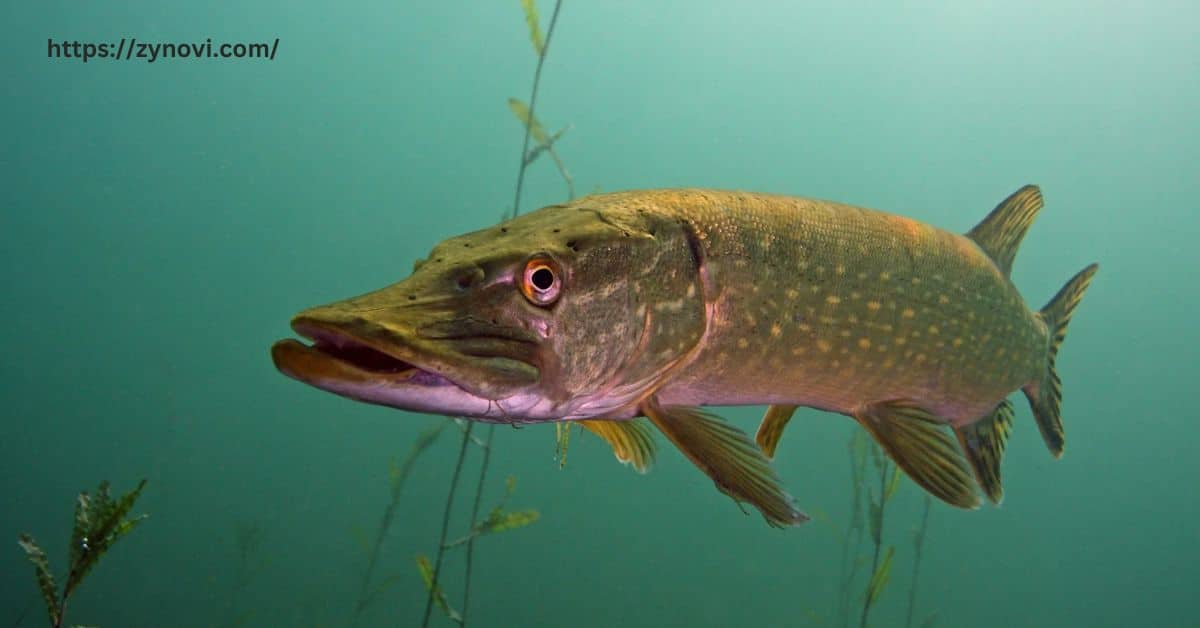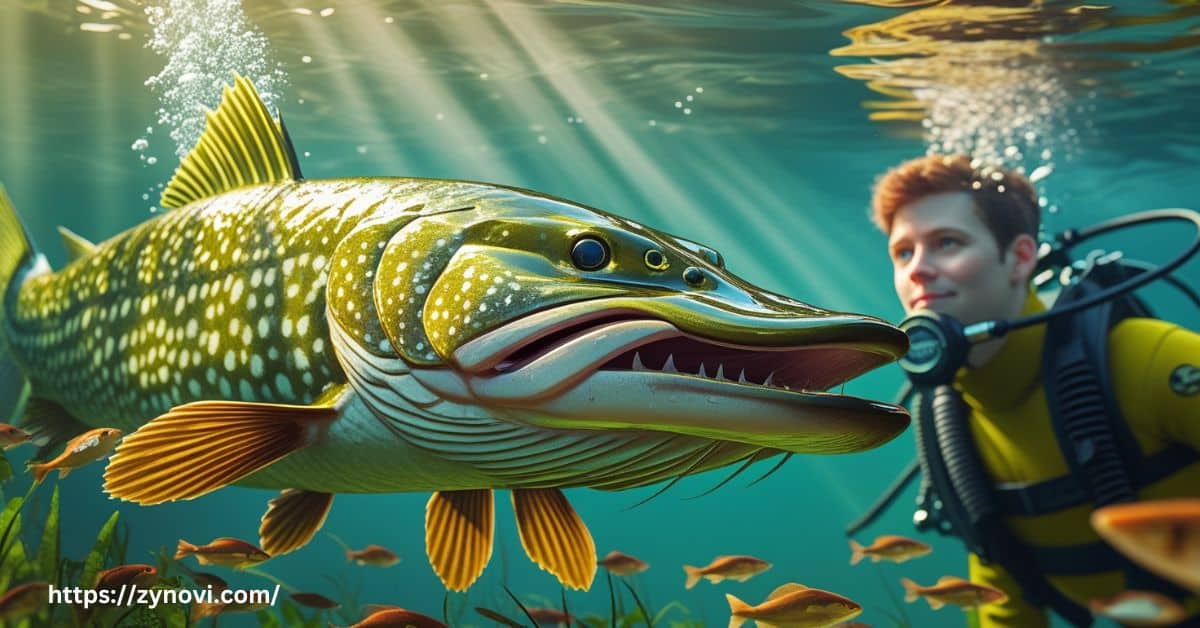Do pike attack humans? Pike do not typically attack humans, but they may bite in rare instances, usually out of defense or curiosity.
It’s a question that often comes up when people think about these sleek, predatory fish lurking beneath the water’s surface. The idea of a fish that could bite you might seem a bit intimidating, but let’s set the record straight. While pike can be aggressive, especially during certain times of the year, attacks on humans are actually quite rare.
But just because pike aren’t out hunting people doesn’t mean you shouldn’t be cautious. In this article, we’ll find out everything you need to know about pike behavior, why they bite, and how you can stay safe around these fascinating creatures. Keep reading!
Do pike attack humans? Understanding Pike Nature
Pike Species Overview
Pike, scientifically known as Esox lucius, are remarkable freshwater fish native to North America, Europe, and Asia. These aggressive predators are instantly recognizable due to their elongated bodies, pointed snouts, and striking olive-green hue adorned with light-colored spots.
This natural camouflage allows them to blend seamlessly into weed beds and reed-filled shallows, where they lie in wait as solitary hunters.
Their ambush tactics and territorial nature make them formidable aquatic predators.
Physical Characteristics:
- Length: Pike commonly grow up to three feet in length, but some exceptional specimens can exceed four feet, making them one of the larger freshwater fish species.
- Weight: The average pike weighs between 10 and 15 pounds, though the largest recorded specimen tipped the scales at an impressive 55 pounds, caught in Germany.
Physical Features and Hunting Adaptations
| Feature | Description |
|---|---|
| Body Structure | Elongated bodies and strong, muscular tails enable exceptional speed. |
| Teeth | Sharp, needle-like teeth allow them to grip slippery prey with ease. |
| Hunting Style | Ambush predators that conceal themselves in vegetation before striking. |
| Speed and Precision | Capable of lightning-fast movements to capture prey effectively. |
| Diet | Feeds on small fish, amphibians, and occasionally waterfowl, showcasing their versatile diet. |
Do Pike Attack Humans?

How Common Are Pike Attacks?
Pike attacks on humans are exceedingly rare and often misunderstood. These freshwater predators, unlike marine species like sharks, seldom interact with humans intentionally.
Most reported incidents stem from mistaken identity, where rapid movements or shiny objects mimic prey. Additionally, pike may exhibit defensive behavior when their territories are disturbed.
Such encounters are typically accidental, emphasizing their preference to avoid human interaction rather than seek it out.
Understanding Pike Behavior Toward Humans
Pike are naturally solitary hunters and fiercely territorial creatures. They typically avoid humans, preferring the cover of weed beds and reed-filled shallows.
However, when humans unknowingly encroach upon their feeding or nesting grounds, pike may react defensively, perceiving the intrusion as a threat.
This defensive behavior often results in rare, accidental encounters. Understanding their instincts and respecting their habitat can minimize human-pike interactions and promote coexistence.
Factors Contributing to Pike Bites on Humans
Reasons Behind Pike Bites
- Mistaken Identity: Pike may confuse human fingers or shiny objects, such as jewelry, for small prey like fish. This often leads to accidental bites during swimming or fishing activities.
- Defensive Behavior: When pike feel provoked or are handled without care, they may react by biting as a means of self-defense. This is more common when anglers attempt to remove hooks without proper tools.
- Territoriality: Pike become particularly aggressive during the spawning season, as they are highly protective of their nesting areas. Any perceived threat to their territory can trigger defensive biting behavior.
Behavioral Triggers Leading to Aggression
- Rapid or splashing movements: Pike are ambush predators, and erratic or splashing movements in the water resemble the struggles of prey, often provoking an aggressive response.
- Bright or shiny objects: Reflective surfaces such as jewelry or shiny lures can trigger their hunting instincts, as these resemble the shimmer of fish scales, enticing pike to strike.
Environmental and Seasonal Influences
Pike behavior fluctuates with the seasons:
- Spawning Season (Spring): During the spawning season, pike exhibit heightened territorial aggression as they defend their nesting areas. Males become particularly protective, competing for the attention of females and safeguarding their chosen spawning grounds.
- Winter Months: In winter, pike’s activity significantly drops due to a reduction in metabolic rate. They become less active and spend much of their time in deeper, cooler waters, where they conserve energy and remain relatively stationary until the water warms up.
Myths vs. Reality: Debunking Common Misconceptions

Are Pike Aggressive Toward Humans by Nature?
Pike Are Not Inherently Aggressive Toward Humans: Pike are generally not aggressive toward humans by nature. They are more focused on their environment and food sources than on interacting with humans.
Pike Bites Are Usually Reactive, Not Predatory: When pike teeth bite, it is typically a defensive reaction rather than an attack for food. They may bite if they feel threatened or provoked, but they do not actively seek out humans as prey.
Commonly Misunderstood Pike Behaviors
- Aggression During Spawning:
During spawning, pike become territorial and defend their nesting areas, showing aggression toward perceived intruders. However, this behavior is more about protecting their eggs than a threat to humans, and they typically avoid direct contact. - Misinterpreted Lunges:
Pike’s quick lunges are often misinterpreted as signs of aggression, but they are typically instinctive or defensive movements. These strikes are usually directed at prey or to establish dominance over other fish, not a deliberate attempt to attack humans.
Significant Pike Attack Incidents
Documented Cases of Pike Bites
- Child Bitten in Minnesota: In a documented case in Minnesota, a young swimmer was bitten on the foot after unknowingly splashing near a pike’s territorial area. The bite was not fatal, but it highlighted the pike’s defensive nature during spawning seasons.
- Swimmer Bitten in Europe: A rare incident in Europe occurred when a pike mistook a swimmer’s hand for prey, resulting in minor injuries. The pike likely responded instinctively, but the bite was not serious, demonstrating how pike occasionally confuse human appendages with potential food sources.
Public Reactions and Media’s Role
Sensationalized reports in the media often exaggerate the danger pike pose to humans, creating unnecessary fear and misunderstanding. These stories tend to focus on isolated incidents, leading the public to believe that pike are inherently aggressive or dangerous.
In reality, pike rarely pose a threat to humans, and their bites are typically defensive rather than predatory. The media’s portrayal can skew public perception, making people overly cautious about a species that is generally non-aggressive.
How Dangerous Are Pike Attacks?
Severity of Injuries from Pike Bites
Do pike attack humans? While pike bites can cause puncture wounds, cuts, and scratches, severe injuries are quite rare. The bites themselves are typically not life-threatening, but the real concern lies in the risk of infection.
Freshwater environments, where pike are commonly found, often harbor bacteria such as Aeromonas and Pseudomonas, which can lead to infections if the wound is not properly cleaned and treated. Prompt medical attention is advised to prevent complications from these bacteria.
Are Pike More Dangerous During Spawning Seasons?
During the spawning season, pike become more territorial, displaying increased aggression toward other fish and potential intruders near their nests. However, their focus during this time is on protecting their eggs rather than attacking humans.
While they may become more defensive and show heightened aggression toward perceived threats in their environment, pike do not typically view humans as targets. The risk of an attack on humans is minimal, and such encounters are rare and usually non-threatening.
Preventing and Managing Pike Encounters

How to Avoid Pike Bites
- Avoid Splashing Excessively:
Excessive splashing can attract pike, as their instincts may lead them to investigate movements in the water. By staying calm and minimizing splashes, you reduce the likelihood of a pike mistaking you for prey or an intruder. - Avoid Wearing Shiny Jewelry:
Shiny jewelry can mimic the glint of fish scales, triggering a pike’s hunting instincts. To avoid attracting unnecessary attention, it’s best to remove any reflective items before entering waters where pike are present. - Stay Out of Spawning Areas:
Pike become more territorial during spawning seasons, fiercely defending their nesting areas. Respecting these zones, particularly in spring, will help you avoid disturbing pike and minimize the chances of an aggressive encounter.
What to Do if Bitten by a Pike
- Clean the Wound Thoroughly with Antiseptic:
Immediately clean the bite with antiseptic to remove bacteria and prevent infection. Gently wash the area with clean water before applying the antiseptic. - Apply a Sterile Bandage and Monitor for Signs of Infection:
After cleaning, cover the wound with a sterile bandage. Keep an eye on the area for redness, swelling, or pus, which could indicate infection. - Seek Medical Attention for Deeper Wounds or If Infection Occurs:
If the wound is deep or shows signs of infection, seek medical care promptly to ensure proper treatment and prevent complications. - Consider a Tetanus Shot and, If Necessary, Antibiotics:
Depending on the severity of the bite and the risk of infection, a tetanus shot or antibiotics may be recommended by a healthcare professional to prevent further issues.
Tips for Minimizing Pike Interactions in Common Areas
- Use Fish Grippers or Pliers When Handling Pike:
When handling pike, use fish grippers or pliers to safely control the fish without direct contact. This reduces the risk of accidental bites while ensuring both you and the pike stay safe. - Wear Protective Gloves to Avoid Accidental Bites:
Wearing protective gloves when handling pike can provide an extra layer of protection, preventing direct skin contact and reducing the chance of bites or injury. - Follow Local Guidelines for Safe Fishing and Swimming Practices:
Adhering to local safety guidelines for fishing and swimming can help minimize the risk of unwanted pike encounters. These rules are often designed to protect both humans and wildlife in common areas.
FAQs
Has there ever been a pike attack on a human?
While rare, there have been isolated incidents of pike bites, usually when they mistake a person’s hand or foot for prey, but these are not common attacks.
How aggressive are pike?
Pike can show aggression, particularly during the spawning season, but they are generally defensive rather than predatory toward humans.
Would a pike bite you?
A pike may bite if it feels threatened or provoked, especially in its territory, but they rarely target humans intentionally.
What is the bite force of a pike?
A pike’s bite force can vary, but it’s strong enough to puncture skin and cause injury, with estimates around 20 to 30 pounds of pressure.
Conclusion: Do Pike Attack Humans?
Pike are remarkable freshwater predators, often referred to as the “water wolves” for their sharp hunting instincts and vital role in maintaining ecosystem balance. While attacks on humans are extremely rare and typically the result of accidental bites, understanding their behavior is crucial for safety.
By respecting their habitats, especially during the spawning season, and taking preventive precautions like avoiding excessive splashing or wearing shiny jewelry, we can minimize risks. Whether fishing in North America or swimming in Europe, fostering awareness helps ensure a safe and respectful coexistence with these incredible creatures.










